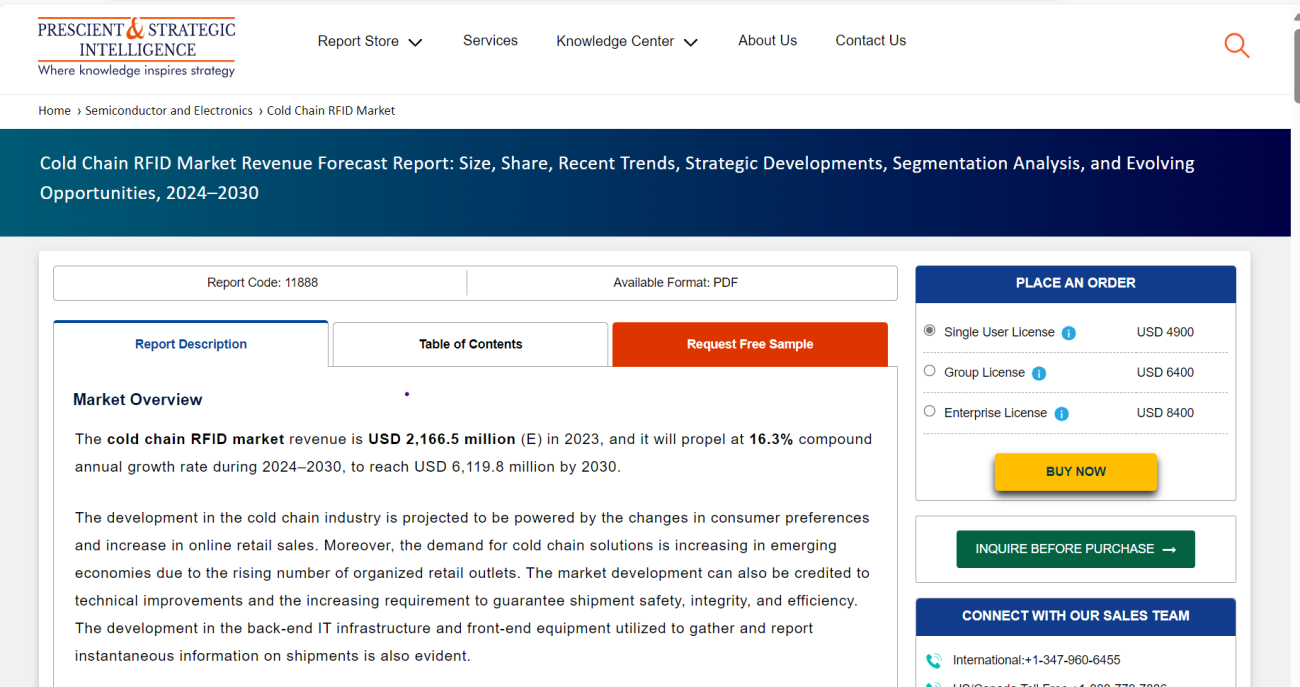
The cold chain RFID market revenue is projected to reach USD 6,119.8 million by 2030, driven by changes in consumer preferences, online retail sales, and the increasing demand for cold chain solutions in emerging economies. Technical improvements and the need for shipment safety, integrity, and efficiency are also contributing factors to market development.
The industry is expected to advance due to rising expenditure on cold chains and government initiatives aimed at reducing food waste. The World Trade Organization and bilateral free-trade agreements have generated prospects for exporters to drive the trade of perishable foods duty-free. The growing consumption of meat in emerging economies is driven by a shift from carbohydrate-rich diets toward protein-rich foods, which raises the demand for refrigerated supply chains. China is projected to experience significant growth due to increasing consumer income.
Growing IT expenditure in cold storage logistics propels the industry’s development by providing improved inventory management and enhancing the overall effectiveness of cold chains. By spending on progressive technologies like RFID, cloud computing and loT, cold storage workers can screen and manage their inventory in real time, decreasing the danger of food waste and spoilage. The increasing need for temperature-sensitive items has increased the requirement for real-time cold chain monitoring.
Compliance with strict guidelines governing the transportation and storage of unpreserved food often requires a strong cold chain system, which can be achieved with the support of IT systems. These systems offer real-time readings on humidity and temperature levels, location tracking and data analytics. Major Key players include Alien Technology, Checkpoint Systems Inc., Impinj Inc., Nedap N.V., Invengo Technology BV, GAO RFID Inc. and Sato Holdings Corporation.
